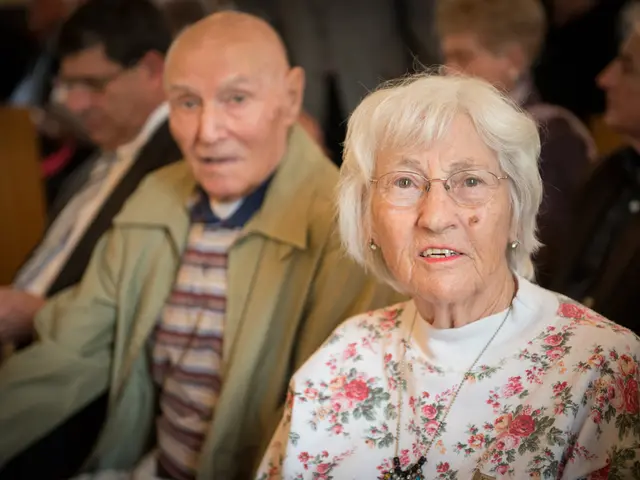Timeline for Re-engagement with an Evasive Ex and Deciding When to Move On
Waiting for an evasive ex to come back can feel like navigating a whirlpool of emotions between longing for them and questioning if the connection is worth it. To help you deal with an avoidantly attached ex, we'll explore the avoidant attachment style, the chances of them returning, and the signs of genuine change.
Evading intimacy: The avoidant attachment style
Avoidant partners often seem independent and emotionally reserved, but they're usually scared of being engulfed by emotional closeness. Stems from childhood experiences marked by dismissed or inconsistently met emotional expression, for them relationships become a battleground between craving connection and the need to protect themselves. At times, they love you deep down, but the pain and fear they harbor from earlier life experiences impedes their ability to be vulnerable.
Resurfacing and reconnection: A possible journey
If they truly want to change, avoidant exes can return to a more accessible relationship with you. However, it requires self-awareness, insight, therapy, and consistent effort. Here are a few key steps for change:
Self-Reflection and Insight:- Realizing patterns: They need to understand how they sabotage connections and hurt the people they care about.- Identifying triggers: Knowing what situations or behaviors trigger their withdrawal helps them control their responses.
Therapy and Support:- Working with a therapist: Learning to process past experiences, recognize patterns, and develop new ways to relate will help them deal with emotions in healthy ways.
Journey towards vulnerability:- Gradual emotional sharing: Taking small steps to express their thoughts and feelings will help them gain trust and reduce fear.- Improved communication: Healthy, open dialogue can pave the way for deeper emotional connection.- Rethinking relationship expectations: Discovering that independence and emotional closeness can coexist will lessen their fear of being consumed.
Consistent effort and mutual understanding:- Patience and commitment: Accepting that progress is slow and ongoing will allow both partners to build trust over time.- Emotional support: Acknowledging their need for space and gently encouraging emotional connection will help create a more harmonious dynamic.
Final thoughts about the return of an avoidant ex
Change takes time, effort, and mutual understanding. If your avoidantly attached ex truly wants to move forward and change their behaviours, they can learn to balance their need for independence with a willingness to be vulnerable. Keep an eye out for open communication, a track record of consistent change, and the marks of their efforts to rebuild trust.
If you wish to learn more, check out my video: "8 Signs an Avoidant Loves You"
But ultimately, it is essential to evaluate if this type of relationship is the best you can have, or if it's time to explore new opportunities for emotional security that align with your needs. Take our attachment styles quiz today to determine the best way to begin your journey towards a secure connection!
```Need support in focusing on your own healing and readiness for secure love? Take our attachment styles quiz today, to determine the best starting point for you!
Case Study: Stephanie's Story-Letting Go with Love
A case study showing Stephanie, a successful single mom, who found let go of her love for an emotionally avoidant partner by discovering her emotional patterns, setting firm boundaries, and embracing her intuition.
[1] Hsu, T. (n.d.). Adult Attachment Theory Explained. Verywell Family. https://www.verywellfamily.com/what-is-adult-attachment-theory-2485945[2] Berman, S. (2021, February 16). Understanding Avoidant Attachment. Psych Central. https://psychcentral.com/lib/understanding-avoidant-attachment/[3] Baker, J. (2021, February 23). Avoidant Attachment: Characteristics and Reasons. Verywell Mind. https://www.verywellmind.com/what-is-avoidant-attachment-2795330[4] Hsu, T. (n.d.). Avoidant Attachment: How to Identify and Cope. Verywell Family. https://www.verywellfamily.com/avoidant-attachment-how-to-identify-and-cope-with-it-2485954[5] Berger, D. L., & Schmidt, U. G. (2008). Praktyk terapeutyczna w teorii i terapii energii żony i męża. Kraków: Biblioteka Psychoanaliza.```
- The avoidant attachment style, characterized by fear of emotional closeness, stems from childhood experiences with dismissed or inconsistent emotional expression.
- For avoidant partners, relationships can become a battleground between craving connection and the need to protect themselves, as they harbor pain and fear from earlier life experiences.
- If a previously avoidant ex wants to change, they must engage in self-awareness, insight, therapy, and consistent effort for a more accessible relationship.
- Key steps for change include self-reflection, identifying triggers, working with a therapist, and gradually emotional sharing.
- Improved communication, rethinking relationship expectations, and consistent effort are essential for deeper emotional connection and trust building.
- Partners should practice patience and commitment, accepting that progress is slow and ongoing, while encouraging emotional connection when appropriate.
- Change can be realized through understanding patterns, learning to process past experiences, and developing new ways to relate in healthy ways.
- It's essential to evaluate if a relationship with an avoidant ex aligns with one's needs for emotional security, considering the potential for long-term growth and healing.
- New opportunities for secure connections can be achieved through self-discovery and understanding attachment styles, as demonstrated by Stephanie, a single mom who let go of her love for an emotionally avoidant partner.
- Adult attachment theory, including characteristics and coping strategies for deal with avoidant attachment, can be found in sources like Verywell Family, Psych Central, and "Praktyk terapeutyczna w teorii i terapii energii żony i męża."








